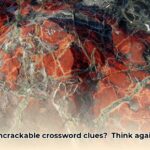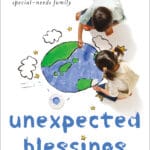“Wind that bloweth”—a phrase whispered through time, echoing from ancient scriptures to the modern crossword puzzle. This seemingly simple expression carries a weight far beyond its five-letter answer, “ANILL,” invoking biblical symbolism and prompting contemplation on the unseen forces shaping our world. Join us as we explore the rich history, symbolic depth, and enduring power of “wind that bloweth.”
From Sacred Scripture to the Crossword: Tracing the Journey
The phrase “wind that bloweth,” a frequent crossword clue, finds its origins in the King James Version of the Bible, specifically John 3:8. [https://www.lolaapp.com/] This verse sets the stage for a deeper exploration, transforming the ordinary act of breathing into a powerful metaphor for the Holy Spirit.
The Whisper of John 3:8: A Biblical Breeze
John 3:8 reads: “The wind that bloweth where it listeth, and thou hearest the sound thereof, but canst not tell whence it cometh, and whither it goeth: so is every one that is born of the Spirit.” (KJV) This passage establishes wind as a potent symbol for the elusive Holy Spirit, present yet unseen, much like the gentle rustle of leaves hinting at a passing breeze.
A Tapestry of Translations: Interpreting the Metaphor
Examining how different Bible translations render this key phrase reveals the nuances of language and interpretation.
| Version | Rendering of John 3:8 (excerpt) |
|---|---|
| King James Version | The wind that bloweth where it listeth… |
| New International Version | The wind blows wherever it pleases… |
| New Living Translation | The wind blows wherever it wants to… |
| English Standard Version | The wind blows where it wishes… |
These variations offer a glimpse into the challenges of translation. Do they alter the core metaphor, or merely offer different perspectives on the same profound idea? Perhaps the shifts in wording subtly influence our understanding of this potent symbol.
The Elusive Nature of the Unseen: More Than Just Air
The wind’s intangible nature mirrors the human experience of grappling with unseen forces. We feel its touch, hear its song, but cannot fully grasp its essence. This resonates with the concept of faith, trusting in an unseen power, like a sailor relying on the unpredictable wind to fill their sails.
Echoes Across Cultures: A Universal Breath
The wind’s symbolism transcends Christianity. Across cultures, it represents the breath of life, the animating force, the ever-shifting nature of existence. From the Greek Zephyr to the revered winds of Native American traditions, this element carries profound symbolic weight, suggesting a shared human quest to comprehend the unknown.
Whispers in the Modern World: Still Carried on the Breeze
Centuries later, “wind that bloweth” continues to resonate, encouraging reflection on the invisible forces—spiritual, social, intellectual—that shape our lives. The spread of ideas, viral trends, shifts in social norms—do they not resemble the wind’s capricious nature? This ancient wisdom offers a timeless perspective on the complexities of modern existence.
Decoding the Crossword Clue: ANILL and Its Alternatives
The frequent appearance of “wind that bloweth” as a crossword clue, often with the five-letter answer “ANILL,” adds another layer of intrigue. [https://www.lolaapp.com/] While “ANILL” is prevalent, its connection to wind remains ambiguous.
Is “ANILL” the Only Answer? A Whirlwind of Possibilities
The prevalence of “ANILL” as a solution, despite an unclear etymological link to wind, raises questions. Could regional dialects, archaic usage, or even misinterpretations be at play? Alternative five-letter words related to wind, such as “gusts,” “wafts,” or “breez,” further complicate the puzzle.
| Crossword Solver | Confidence in ANILL | Alternative Solutions |
|---|---|---|
| WordTips | High | Not specified |
| Wordplays.com | Moderate | Not specified |
| Crossword-Solver.io | Low | 30+ |
| Crossword Tracker | Not specified | Not specified |
Ongoing linguistic research may shed light on “ANILL” and its potential connection to wind. The dynamic nature of language allows for evolving understandings, suggesting that future discoveries may refine our current knowledge.
Beyond the Crossword: Embracing the Mystery
“Wind that bloweth” ultimately serves as a reminder of the mysteries surrounding us. It connects ancient wisdom to modern experience, encouraging us to accept the unknown. [https://www.lolaapp.com/] It suggests that true understanding often lies in embracing the inherent mystery of existence. Perhaps, like the heartwarming story of an unexpected blessing nyt [https://www.lolaapp.com/], it points to the serendipitous beauty of life’s unpredictable turns.
What do you spread on crackers with 4 letters? (Pâté and Beyond)
While “pâté” is the likely four-letter answer in crossword puzzles, the world of cracker spreads extends far beyond this classic. [https://www.lolaapp.com/]
From hummus and white bean dip to various cheeses, the possibilities are vast. Selecting the ideal spread depends on the cracker’s texture and flavor, creating a harmonious pairing.
| Cracker Type | Suggested Spread(s) |
|---|---|
| Buttery | Pâté, Soft Cheese (Brie, Goat Cheese) |
| Wheat | Hummus, White Bean Dip, Chutney |
| Multi-grain | Spicy Pâté, Hummus, Guacamole |
| Rye | Smoked Salmon, Cream Cheese, Dill |
| Seed Crackers | Hummus, Baba Ghanoush, White Bean Dip |
Some even suggest that the “wind that bloweth” symbolizes a craving or desire, leading us towards the perfect cracker and spread combination. This playful interpretation adds yet another dimension to the phrase’s rich tapestry of meaning.
- Unveiling Bernhard Caesar Einstein’s Scientific Achievements: A Legacy in Engineering - July 15, 2025
- Uncover who is Jerry McSorley: CEO, Family Man, Business Success Story - July 15, 2025
- Discover Bernhard Caesar Einstein’s Scientific Contributions: Unveiling a Legacy Beyond Einstein - July 15, 2025















